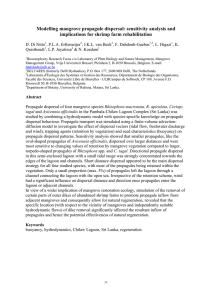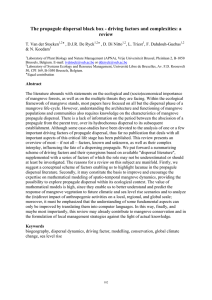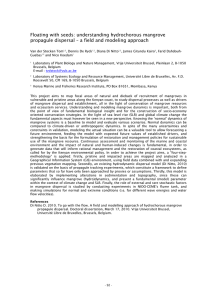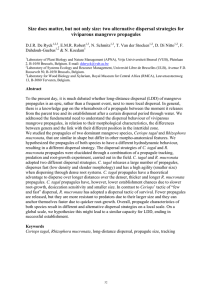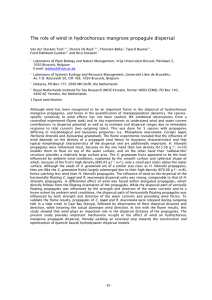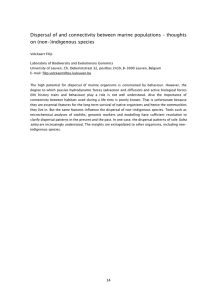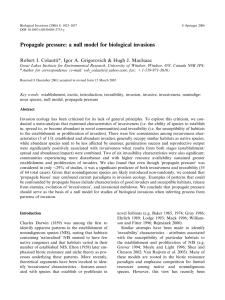Biological and environmental drivers in mangrove propagule dispersal and
advertisement
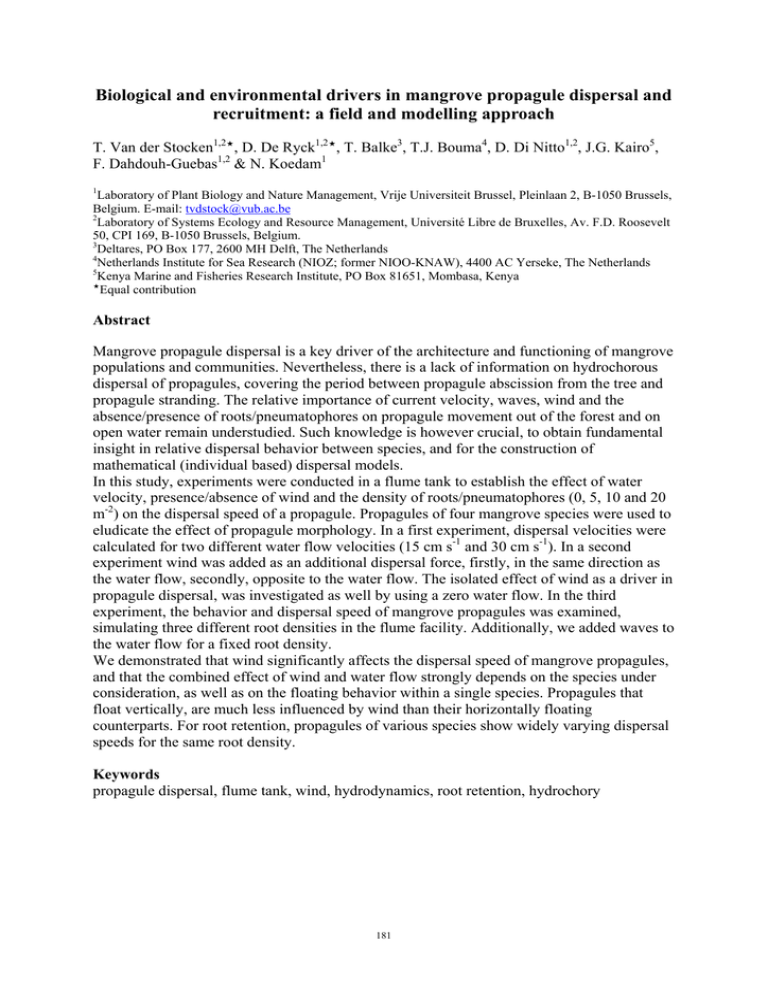
Biological and environmental drivers in mangrove propagule dispersal and recruitment: a field and modelling approach T. Van der Stocken1,2, D. De Ryck1,2, T. Balke3, T.J. Bouma4, D. Di Nitto1,2, J.G. Kairo5, F. Dahdouh-Guebas1,2 & N. Koedam1 1 Laboratory of Plant Biology and Nature Management, Vrije Universiteit Brussel, Pleinlaan 2, B-1050 Brussels, Belgium. E-mail: tvdstock@vub.ac.be 2 Laboratory of Systems Ecology and Resource Management, Université Libre de Bruxelles, Av. F.D. Roosevelt 50, CPI 169, B-1050 Brussels, Belgium. 3 Deltares, PO Box 177, 2600 MH Delft, The Netherlands 4 Netherlands Institute for Sea Research (NIOZ; former NIOO-KNAW), 4400 AC Yerseke, The Netherlands 5 Kenya Marine and Fisheries Research Institute, PO Box 81651, Mombasa, Kenya Equal contribution Abstract Mangrove propagule dispersal is a key driver of the architecture and functioning of mangrove populations and communities. Nevertheless, there is a lack of information on hydrochorous dispersal of propagules, covering the period between propagule abscission from the tree and propagule stranding. The relative importance of current velocity, waves, wind and the absence/presence of roots/pneumatophores on propagule movement out of the forest and on open water remain understudied. Such knowledge is however crucial, to obtain fundamental insight in relative dispersal behavior between species, and for the construction of mathematical (individual based) dispersal models. In this study, experiments were conducted in a flume tank to establish the effect of water velocity, presence/absence of wind and the density of roots/pneumatophores (0, 5, 10 and 20 m-2) on the dispersal speed of a propagule. Propagules of four mangrove species were used to eludicate the effect of propagule morphology. In a first experiment, dispersal velocities were calculated for two different water flow velocities (15 cm s-1 and 30 cm s-1). In a second experiment wind was added as an additional dispersal force, firstly, in the same direction as the water flow, secondly, opposite to the water flow. The isolated effect of wind as a driver in propagule dispersal, was investigated as well by using a zero water flow. In the third experiment, the behavior and dispersal speed of mangrove propagules was examined, simulating three different root densities in the flume facility. Additionally, we added waves to the water flow for a fixed root density. We demonstrated that wind significantly affects the dispersal speed of mangrove propagules, and that the combined effect of wind and water flow strongly depends on the species under consideration, as well as on the floating behavior within a single species. Propagules that float vertically, are much less influenced by wind than their horizontally floating counterparts. For root retention, propagules of various species show widely varying dispersal speeds for the same root density. Keywords propagule dispersal, flume tank, wind, hydrodynamics, root retention, hydrochory 181
